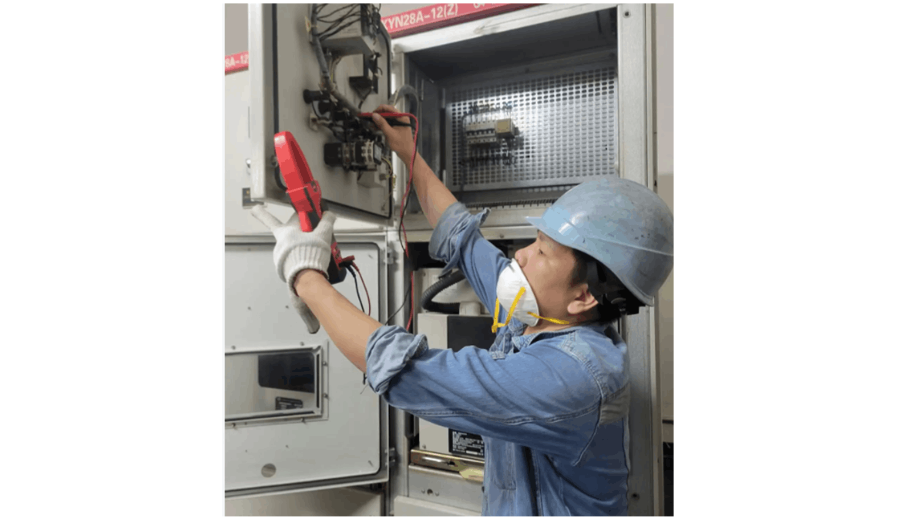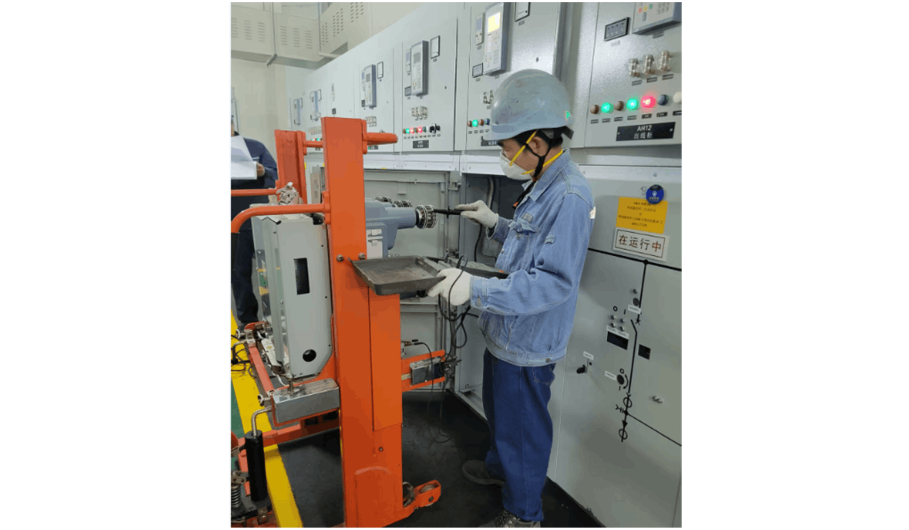Comprehensive maintenance is crucial for ensuring the safe and stable operation of high-voltage power distribution systems. Key maintenance requirements include: First, utilizing operational maintenance to achieve SCADA system data monitoring and acquisition, ensuring that system operating parameters meet established constraints under normal conditions. Second, implementing maintenance to carry out Demand Side Management (DSM) and Load Management (LM), optimizing the load curve to prevent overloading and violation of inequality constraints during peak demand periods.
Third, through maintenance, achieving voltage/reactive power optimization and load balancing to reduce network losses and enhance the operational efficiency of the distribution system. Finally, performing mechanical calculations under various stress conditions and weather scenarios to ensure safety factors are not below specified values, preventing safety incidents. During normal operation of high-voltage distribution systems, maintenance must ensure that design and implementation support continuous, stable operation and provide reliable safety assurance. In practical maintenance, a scientific and comprehensive maintenance plan should be developed based on the actual operating conditions of the system.
Maintenance and Inspection of Electrical Equipment
The normal operation of electrical equipment is closely tied to daily maintenance and inspection. Timely identification and effective resolution of issues in the early stages of failure can not only shorten repair time and reduce economic losses but also improve enterprise efficiency and promote sustainable development.
Routine Inspection of Electrical Equipment
Regular maintenance, based on predefined cycles, is a fundamental measure to enhance maintenance effectiveness. Routine inspections must be strictly implemented in daily operations to prevent safety failures.

Daily Patrol Inspection
Daily patrol inspection involves external observation of high-voltage equipment to check if it is operating normally. This non-quantitative operational management method is suitable for widely distributed high-voltage equipment. Patrol inspectors, as specialized technicians, are responsible for inspecting equipment in specific process sections. They must observe potential hazards and anomalies according to equipment standards, accurately capture early fault information, and provide clear inspection content, items, locations, and positions for condition inspectors. This improves fault location efficiency, reduces inspection time, and ensures stable equipment operation.
Periodic Condition Inspection
To maintain the original performance of production equipment, preventive and thorough inspections should be conducted at key points and specific locations according to predefined methods and cycles. This enables early detection of defects and hidden dangers, facilitating early prevention and resolution, thereby improving inspection efficiency. Periodic condition inspection is carried out by maintenance personnel who, based on information provided by patrol inspectors, conduct in-depth checks and repairs on abnormal equipment, ensuring high-voltage equipment operates without faults.
Equipment Parameter Monitoring
System maintenance should not only inspect external faults but also focus on whether equipment operating parameters are normal. Strict acceptance of parameters is essential for ensuring normal equipment operation and assessing system design compliance. Key monitoring contents include: Normal parameters after equipment commissioning, such as automatic tripping protection at high temperatures, timely activation of cooling fans when temperature rises, and stable temperature of transformer windings; normal function of distribution switches; critical loads equipped with dual power supply; regular maintenance of critical loads; and preventive testing of transformers at specified intervals.
Furthermore, during system optimization and maintenance, any parameter anomalies should be immediately reported to maintenance personnel for resolution. Simply recording faults without addressing them can lead to accumulation of issues. Maintenance personnel must recognize the importance of daily parameter monitoring for overall system stability, enabling proactive supervision in daily work to prevent safety incidents.
Precautions for High-Voltage Equipment Maintenance
Maintenance of high-voltage equipment primarily involves two aspects: (1) developing maintenance strategies based on equipment operating conditions, and (2) real-time monitoring and operation by on-duty personnel. Only by coordinating these two aspects effectively can the safe operation of high-voltage equipment be ensured.
Improving Electrical Equipment Maintenance Procedures
For faulty equipment, avoid disassembly without analysis. First, consult operators to understand the cause and specific phenomena of the fault. For heavily contaminated equipment, clean contact points, terminals, and buttons first, then check if external control keys are malfunctioning—many faults are caused by conductive dust or dirt blockage, which can be resolved after cleaning. Second, before maintenance, inspect the equipment's exterior for damage or cracks. After understanding its service life and maintenance history, proceed with internal inspection. Disassembly should only occur after confirming an internal fault. Finally, power supply sections have a high failure rate; thus, inspect components such as fuses, thermal relays, contactors, and buttons in a de-energized state to assess the fault. Then, perform a powered test, using parameter measurements and auditory cues to locate the fault point and implement targeted repairs.

Determining Maintenance Focus and Strategy Based on Fault Consequences
Equipment may experience various faults with differing impacts: some affect only status indicators, others impact electrical/acoustic performance, modulation depth, or output power, while some can cause complete shutdown. Due to the significant differences in fault consequences, different repair strategies should be adopted. However, in practice, maintenance personnel often struggle to accurately assess fault severity, leading to blind repairs. Therefore, it is essential to remember that the goal of preventive maintenance is to eliminate, reduce, or prevent fault consequences, enabling scientific maintenance planning.
Condition-Based Approach for Component Repair or Replacement
For certain components, reliability is correlated with service time; replacing or repairing them before potential failures occur can prevent breakdowns. However, for components where reliability is not significantly related to service time, scheduled replacement or maintenance does not improve equipment performance. In practice, some personnel replace components prematurely to avoid failures, but this can inadvertently introduce new problems. Therefore, component replacement and disassembly repairs should be approached cautiously to avoid secondary faults.
Component Maintenance, Cleaning, and Inspection as the Core of Preventive Maintenance
As high-voltage equipment automation systems continuously upgrade, operations become increasingly simplified, and equipment monitoring relies more on automated control systems, reducing the number of components directly observable by operators. Anomalies previously detectable through listening, meter reading, and patrols now require maintenance inspections. Therefore, during inspections, close attention should be paid to component conditions, such as oil or water leakage, pin detachment, sparking marks, or overheating discoloration at circuit joints, fuse clips, and high-current connection points. These anomalies are often visible through surface observation. However, some staff frequently overlook subtle changes, delaying timely fault resolution. Thus, meticulousness in work must be enhanced to ensure faults are detected at the earliest possible moment.
























